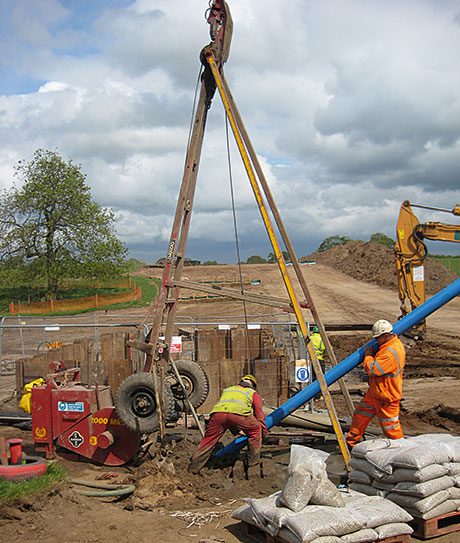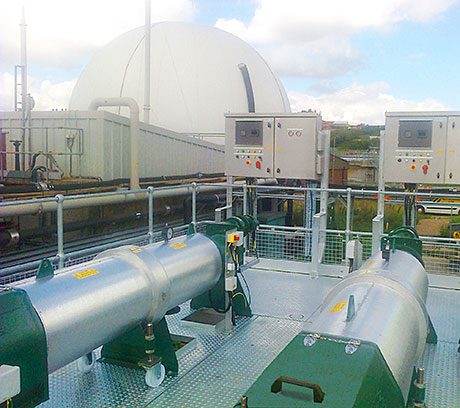With concern rising over the security of energy supplies, large salt cavities deep underground in Cheshire are being used to create additional storage facilities for natural gas. Gavin Campbell explains.
ENERGY security is certainly a hot topic. With the continued decline of domestic gas production from the North Sea and growing dependence on gas sources from across Europe, Russia and North Africa, the burning question is how the UK can maintain energy supplies in the face of uncertain political and economic events. There’s also the issue of how to maintain enough gas in the system to be able to cope at times of peak demand, such as during cold winter spells.
Increasing temporary storage capacity is one sure way of increasing confidence that the country can reliably draw on the gas it needs for domestic and industrial use. But where to safely and securely store the huge quantities that may be required? Rock salt cavities provide an unusual and intriguing answer.
At Hole House Farm in Middlewich, Cheshire, EDF Energy are building a new fast cycle underground gas storage facility which will have a total capacity of 36 million therms when it becomes fully operational in 2016. The storage facility consists of 10 pre-existing cavities formed in the rock salt deposits some 200 metres beneath the ground. Solution mining involving the controlled injection of fresh water is used to dissolve the salt deposits to increase the size of the cavities and form them into specific shapes.
The displaced brine will be used by British Salt Ltd as additional feedstock for their salt production process. The cavities will act as voids into which natural gas can be pumped for temporary storage, and then pumped back out into the national transmission system to be used at times of high demand.
To connect EDF’s new gas storage facility with the national transmission system, National Grid have reinforced their existing infrastructure with the construction of a 3.75 km steel pipeline running underground through mainly private agricultural land south of the village of Warmingham in Cheshire. Such major gas infrastructure projects naturally take a considerable length of time to plan, build and install. The right specialised technical advice can therefore be critical to ensuring a successful outcome.
Retained to provide specialised geological and geotechnical advice and support, Wardell Armstrong have been involved with this project since 2009. Their work called for close collaboration with leading infrastructure specialists MWH (the project environmental consultants employed by National Grid), with Murphy Pipelines who were appointed main works pipeline contractor in December 2010, the Environment Agency, and of course with National Grid on key issues such as identifying and mitigating potential engineering and health and safety hazards.
An early site investigation stage looked at the routing, the detailed design of the pipeline and the installations above ground, defining both the ground and groundwater conditions. Great care was taken to avoid centres of population, significant environmental features and areas which would present difficulties during construction, such as rivers, roads and areas used for mineral extraction. Various phases of physical investigation included trial pits, boreholes, laboratory testing and analysis, and groundwater level monitoring. Background water quality monitoring regimes were also designed for pre-, during and post-construction stages, an essential step in making sure that none of the works caused damage to the water environment.
A deep micro-tunnel crossing of the River Wheelock, with nine metre shafts planned on either side, called for a still higher level of detailed supplementary investigation involving further boreholes, geotechnical testing and surface geophysics. Complex hydrogeological conditions in the area were identified by Wardell Armstrong following ground investigation, including artesian groundwater conditions at around twelve metres deep. The early identification of this critical construction hazard ensured that Murphy Pipelines could quickly design and install a ‘site specific’ temporary dewatering system at the River Wheelock. This proved essential to pump water out of the ground to reduce the pressure and eliminate the risk of basal failure of the shafts.
An additional part of the project involved Wardell Armstrong advising MWH and National Grid on the planning and carrying out of a suite of non-invasive geophysical surveys using a towed sledge carrying various survey instruments. The surveys were carried out by Zetica, with the results assessed in terms of geology/geotechnics by Wardell Armstrong and archaeology by MWH. Wardell Armstrong’s input enabled the value and potential future use of these methods of investigation on other cross-country pipeline projects to be independently assessed for National Grid.
While it certainly doesn’t aim to resolve the whole issue of securing the nation’s energy supply, the Hole House Farm project is a valuable and strategically important asset in increasing the storage capacity of natural gas. Not only that, but it looks like an all-round ‘win win’, combining as it does the use of pre-existing ‘hidden’ underground cavities (rather than new above-ground structures) with the useful additional salt production that runs in parallel.
Gavin Campbell is Technical Director at Wardell Armstrong LLP, an engineering consultant specialising in environmental development and management.










